Neural Network for Enhancing Microscopic Resolution Based on Images from Scanning Electron Microscope
Abstract
1. Introduction
2. Materials and Methods
2.1. Overview of the Proposed Method
2.2. Experimental Setup
2.3. Target Channel
2.4. Image Pre-Processing and Calibration
2.5. Feature Extraction and Neural Network
3. Results
3.1. Scaling and Alignment of Images from OM and SEM
3.2. Feature Extractions
3.3. NN Training with Images from OM and SEM
3.4. NN Prediction and Performance
4. Discussions
5. Conclusions
Author Contributions
Funding
Acknowledgments
Conflicts of Interest
References
- Verschueren, H. Interference reflection microscopy in cell biology: Methodology and applications. J. Cell Sci. 1985, 75, 279–301. [Google Scholar]
- Holden, S.J.; Uphoff, S.; Kapanidis, A.N. DAOSTORM: An algorithm for high-density super-resolution microscopy. Nat. Methods 2011, 8, 279–280. [Google Scholar] [CrossRef]
- Tsai, C.-H.D.; Sakuma, S.; Arai, F.; Kaneko, M. A New Dimensionless Index for Evaluating Cell Stiffness-Based Deformability in Microchannel. IEEE Trans. Biomed. Eng. 2014, 61, 1187–1195. [Google Scholar] [CrossRef]
- Horade, M.; Tsai, C.-H.D.; Ito, H.; Kaneko, M. Red Blood Cell Responses during a Long-Standing Load in a Microfluidic Constriction. Micromachines 2017, 8, 100. [Google Scholar] [CrossRef]
- Tsai, C.-H.D.; Sakuma, S.; Arai, F.; Taniguchi, T.; Ohtani, T.; Sakata, Y.; Kaneko, M. Geometrical alignment for improving cell evaluation in a microchannel with application on multiple myeloma red blood cells. RSC Adv. 2014, 4, 45050–45058. [Google Scholar] [CrossRef]
- Tsai, C.-H.D.; Tanaka, J.; Kaneko, M.; Horade, M.; Ito, H.; Taniguchi, T.; Ohtani, T.; Sakata, Y. An On-Chip RBC Deformability Checker Significantly Improves Velocity-Deformation Correlation. Micromachines 2016, 7, 176. [Google Scholar] [CrossRef] [PubMed]
- Abbe, E. Contributions to the theory of the microscope and microscopic detection (Traduction from German) Beiträge zur Theorie des Mikroskops und der mikroskopischen Wahrnehmung. Arch. Mikroskopische Anat. 1873, 413–468. [Google Scholar] [CrossRef]
- Rasmussen, A.; Deckert, V. New dimension in nano-imaging: Breaking through the diffraction limit with scanning near-field optical microscopy. Anal. Bioanal. Chem. 2005, 381, 165–172. [Google Scholar] [CrossRef] [PubMed]
- De Haan, K.; Rivenson, Y.; Wu, Y.; Ozcan, A. Deep-Learning-Based Image Reconstruction and Enhancement in Optical Microscopy. Proc. IEEE 2019, 108, 30–50. [Google Scholar] [CrossRef]
- Froggatt, M.; Moore, J. High-spatial-resolution distributed strain measurement in optical fiber with Rayleigh scatter. Appl. Opt. 1998, 37, 1735–1740. [Google Scholar] [CrossRef]
- Liu, Y.; Zhang, C.; Wang, L.V. Effects of light scattering on optical-resolution photoacoustic microscopy. J. Biomed. Opt. 2012, 17, 126014. [Google Scholar] [CrossRef] [PubMed][Green Version]
- Shiotari, A.; Sugimoto, Y. Ultrahigh-resolution imaging of water networks by atomic force microscopy. Nat. Commun. 2017, 8, 14313. [Google Scholar] [CrossRef] [PubMed]
- Vernon-Parry, K.D. Microscopy: An introduction. III-Vs Rev. 2000, 13, 40–44. [Google Scholar]
- Thévenaz, P.; Blu, T.; Unser, M. Image Interpolation and Resampling. Handb. Med Image Process. Anal. 2009, 465–493. [Google Scholar] [CrossRef]
- Walker, J.G. Optical Imaging with Resolution Exceeding the Rayleigh Criterion. Opt. Acta: Int. J. Opt. 1983, 30, 1197–1202. [Google Scholar] [CrossRef]
- Fattal, R. Image upsampling via imposed edge statistics. ACM Trans. Graph. 2007, 26, 95. [Google Scholar] [CrossRef]
- Wang, Y.; Arns, C.H.; Rahman, S.S.; Arns, J.-Y. Porous Structure Reconstruction Using Convolutional Neural Networks. Math. Geol. 2018, 50, 781–799. [Google Scholar] [CrossRef]
- Dong, C.; Loy, C.C.; He, K.; Tang, X. Image Super-Resolution Using Deep Convolutional Networks. IEEE Trans. Pattern Anal. Mach. Intell. 2015, 38, 295–307. [Google Scholar] [CrossRef]
- Dong, C.; Loy, C.C.; Tang, X. Accelerating the super-resolution convolutional neural network. In Proceedings of the Financial Cryptography and Data Security; Springer Science and Business Media LLC: New York, NY, USA, 2016; Volume 9906, pp. 391–407. [Google Scholar]
- Song, X.; Dai, Y.; Qin, X. Deep depth super-resolution: Learning depth super-resolution using deep convolutional neural network. Comput. Vis. 2017, 10114, 360–376. [Google Scholar] [CrossRef]
- Hell, S.W.; Sahl, S.J.; Bates, M.; Zhuang, X.; Heintzmann, R.; Booth, M.J.; Bewersdorf, J.; Shtengel, G.; Hess, H.F.; Tinnefeld, P.; et al. The 2015 super-resolution microscopy roadmap. J. Phys. D Appl. Phys. 2015, 48, 443001. [Google Scholar] [CrossRef]
- Eom, J.; Moon, S. Three-Dimensional High-Resolution Digital Inline Hologram Reconstruction with a Volumetric Deconvolution Method. Sensors 2018, 18, 2918. [Google Scholar] [CrossRef] [PubMed]
- Huang, X.; Li, Y.; Xu, X.; Wang, R.; Yao, J.; Han, W.; Wei, M.; Chen, J.; Xuan, W.; Sun, L. High-Precision Lensless Microscope on a Chip Based on In-Line Holographic Imaging. Sensors 2021, 21, 720. [Google Scholar] [CrossRef] [PubMed]
- Canny, J. A Computational Approach to Edge Detection. IEEE Trans. Pattern Anal. Mach. Intell. 1986, PAMI-8, 679–698. [Google Scholar] [CrossRef]
- Tsai, C.-H.D.; Lin, X.-Y. Experimental Study on Microfluidic Mixing with Different Zigzag Angles. Micromachines 2019, 10, 583. [Google Scholar] [CrossRef] [PubMed]
- Otsu, N. A threshold selection method from gray-level histograms. Automatica 1975, C, 62–66. Available online: http://web-ext.u-aizu.ac.jp/course/bmclass/documents/otsu1979.pdf (accessed on 20 March 2014).
- Sobel, I.; Feldman, G. An isotropic 3x3 image gradient operator. Stanf. Artif. Intell. Proj. 2015, 271–272. [Google Scholar] [CrossRef]
- Moré, J. The Levenberg-Marquardt algorithm: Implementation and theory. In Lecture Notes in Mathematicsl; Springer: Berlin/Heidelberg, Germany, 1978; Volume 630. [Google Scholar]
- Barber, C.B.; Dobkin, D.P.; Huhdanpaa, H. The quickhull algorithm for convex hulls. ACM Trans. Math. Softw. 1996, 22, 469–483. [Google Scholar] [CrossRef]
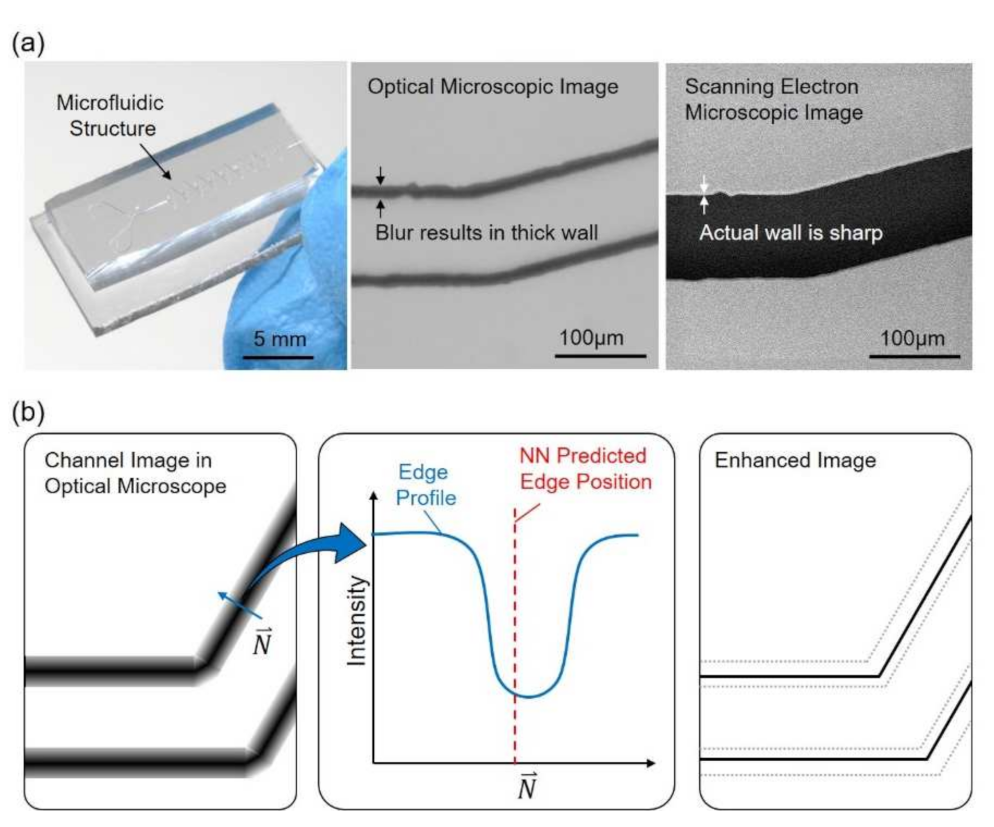
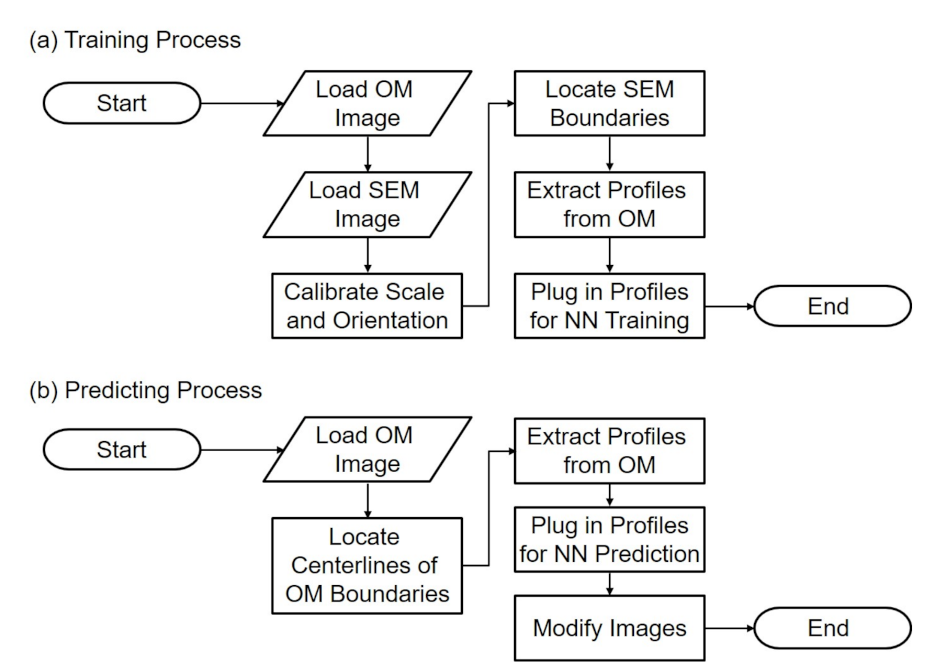

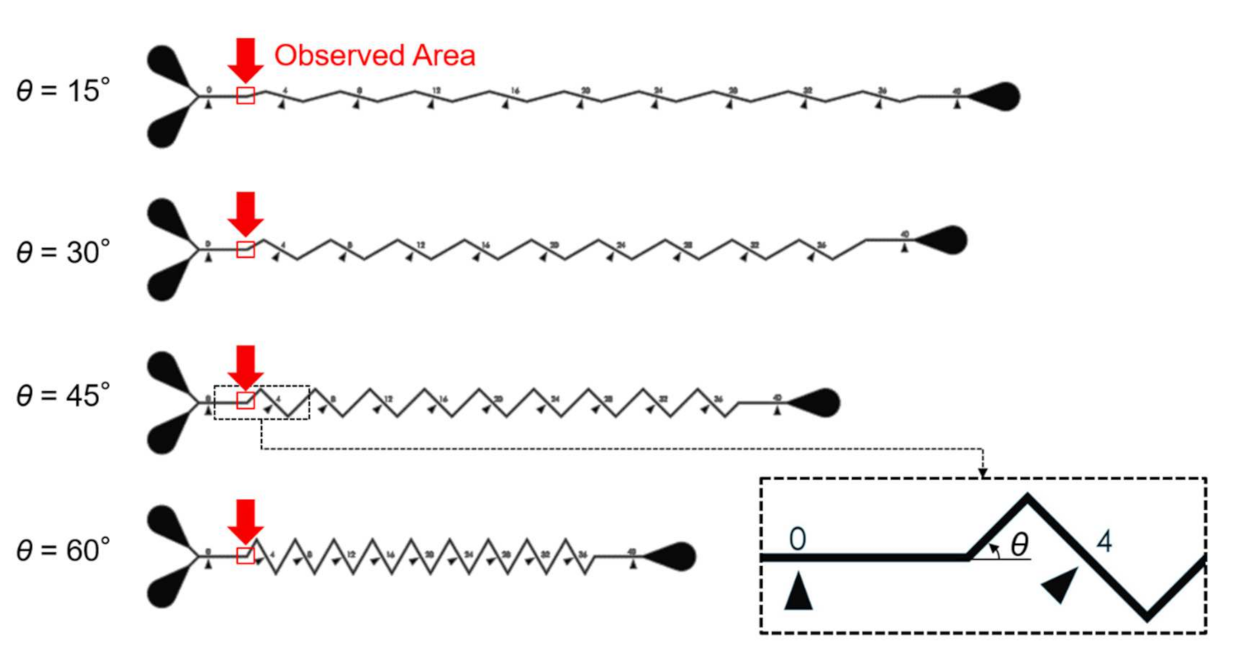

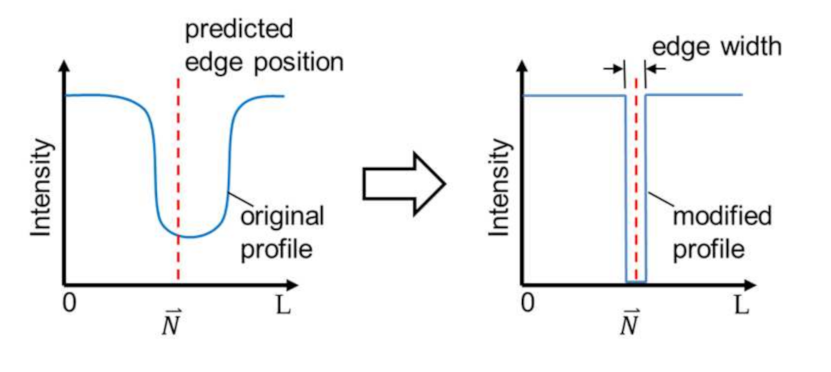

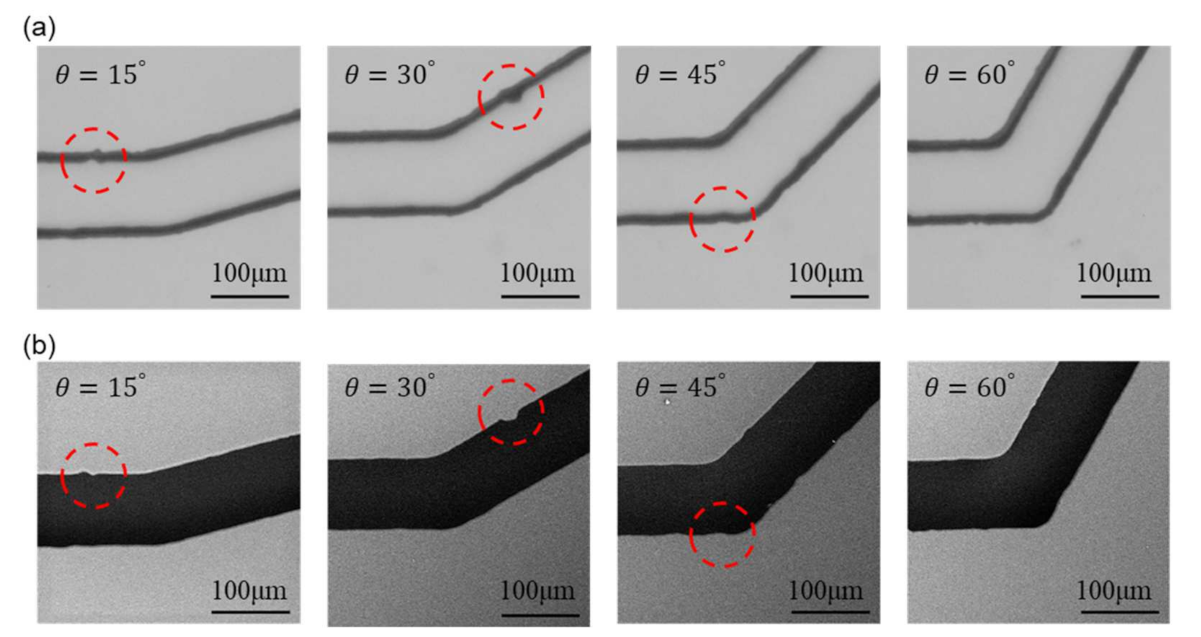

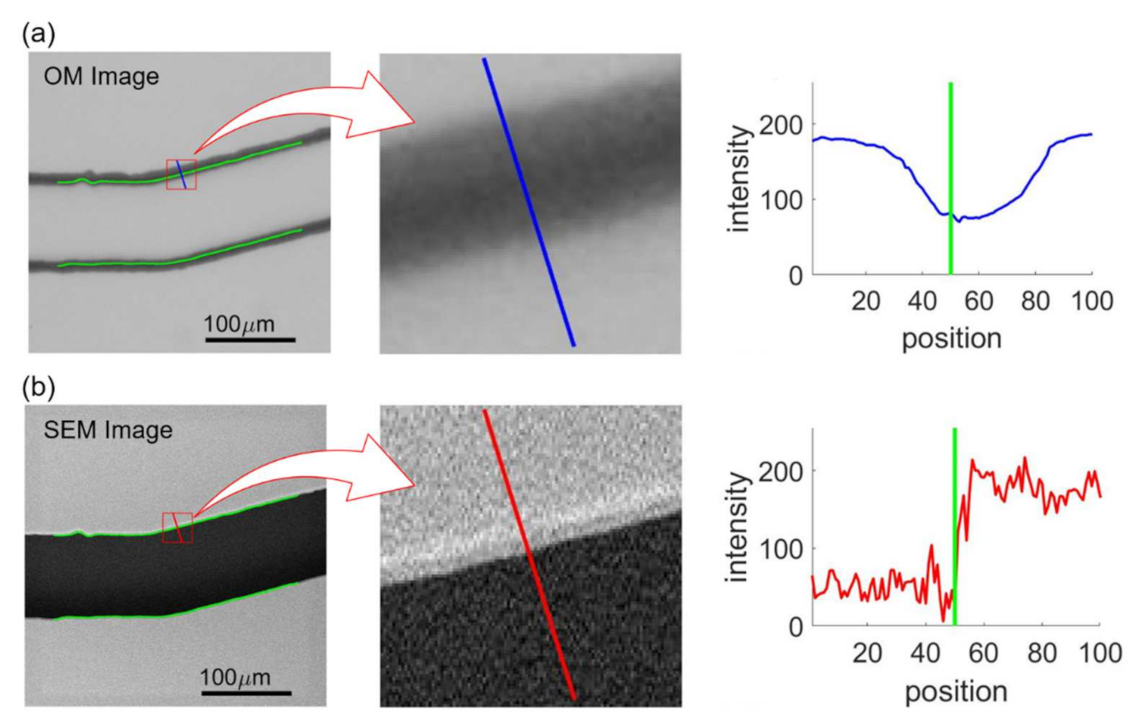

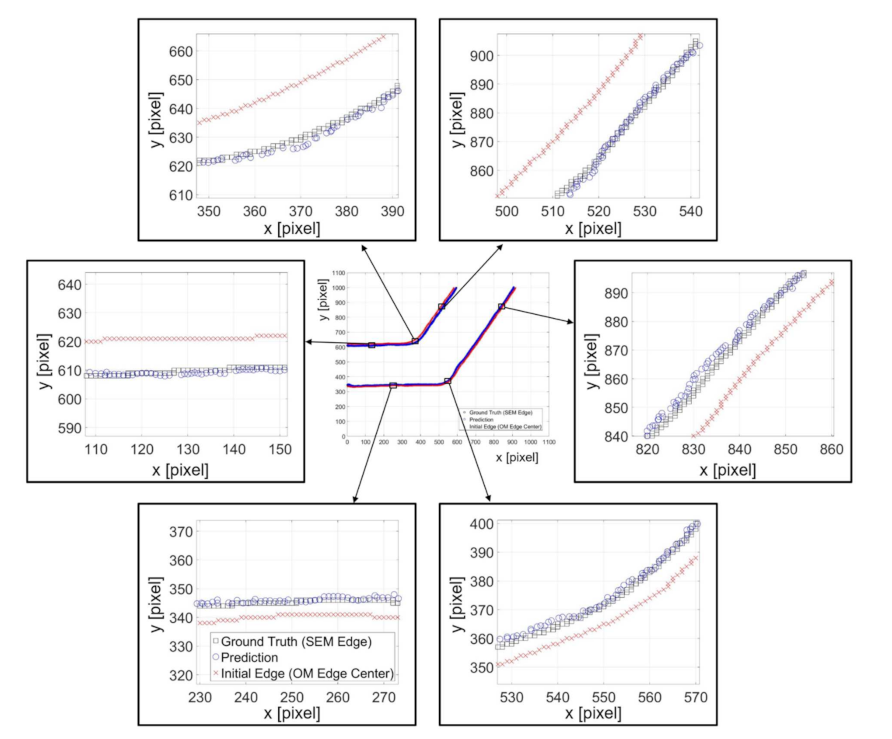
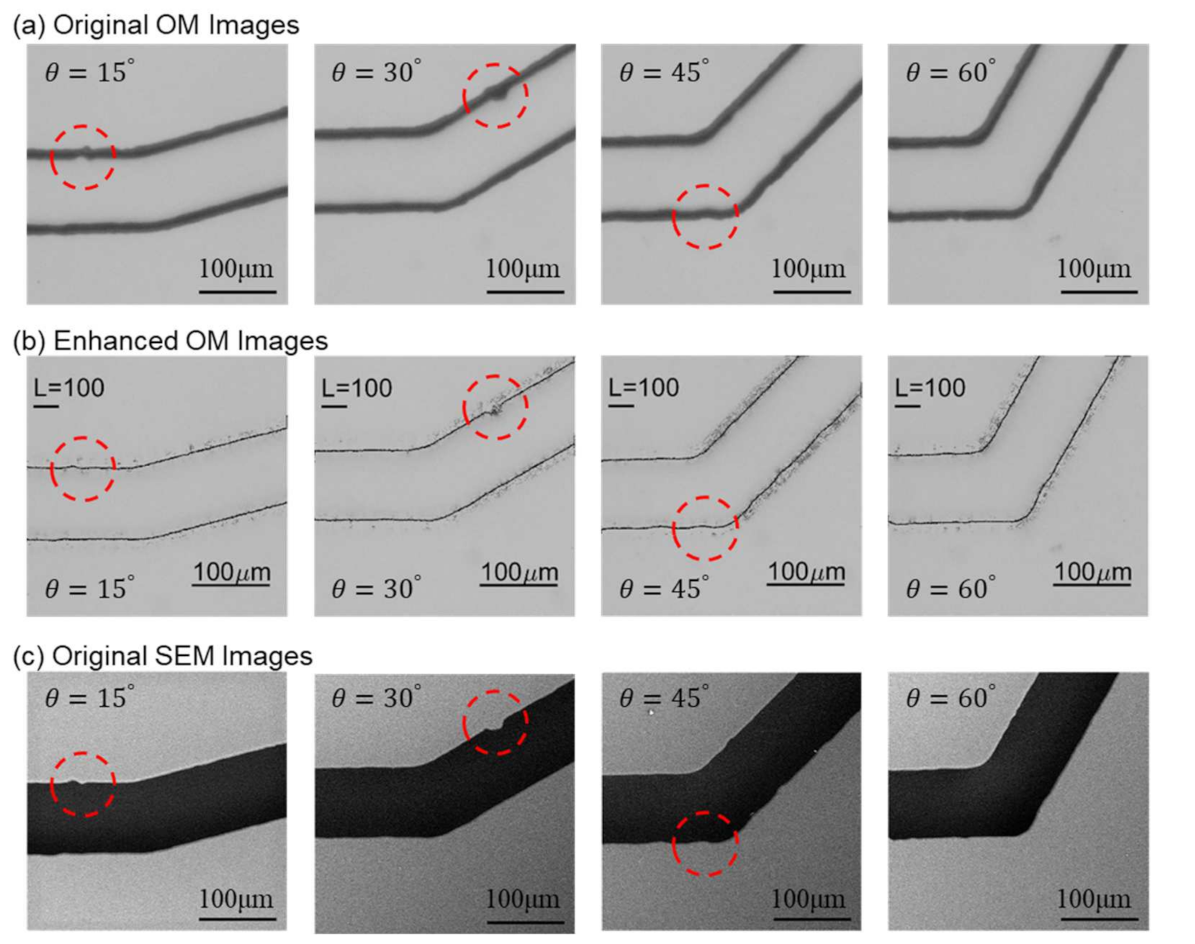
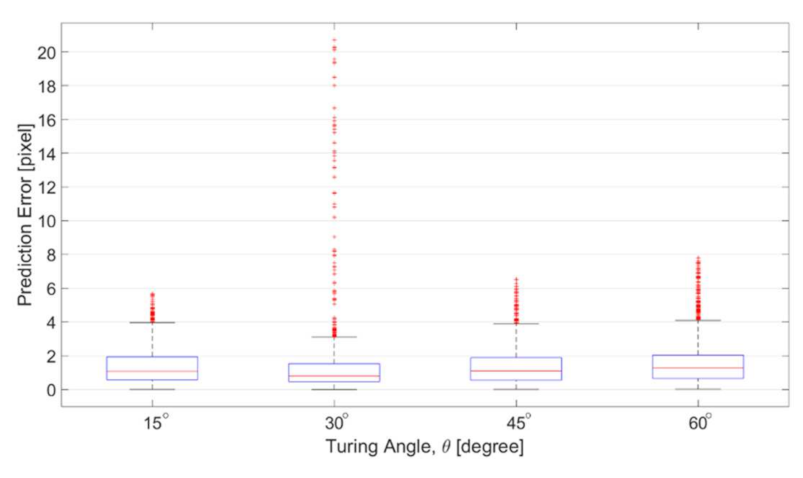


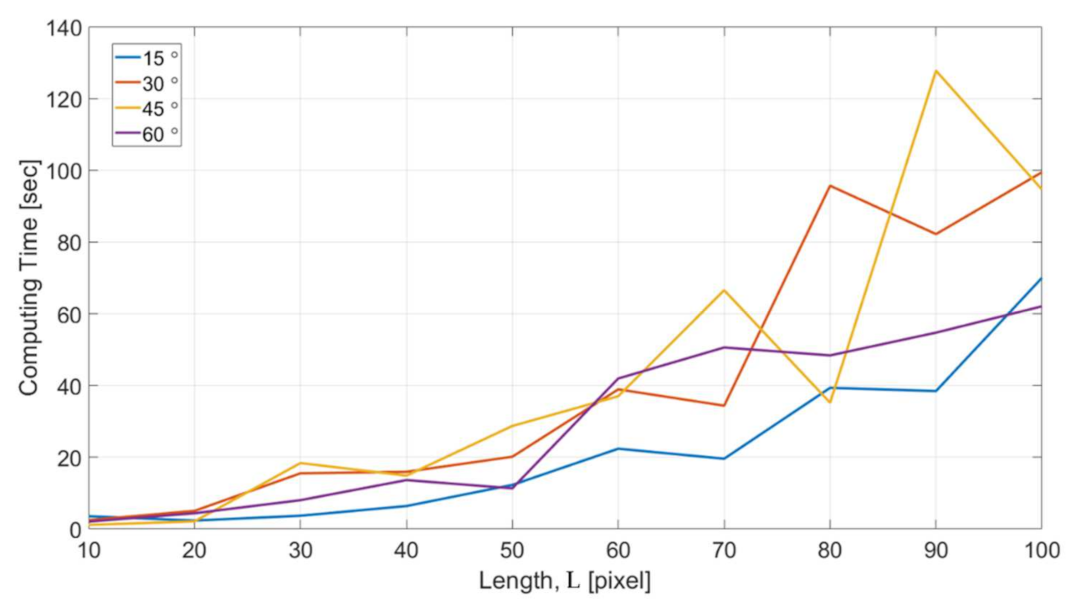
Publisher’s Note: MDPI stays neutral with regard to jurisdictional claims in published maps and institutional affiliations. |
© 2021 by the authors. Licensee MDPI, Basel, Switzerland. This article is an open access article distributed under the terms and conditions of the Creative Commons Attribution (CC BY) license (http://creativecommons.org/licenses/by/4.0/).
Share and Cite
Tsai, C.-H.D.; Yeh, C.-H. Neural Network for Enhancing Microscopic Resolution Based on Images from Scanning Electron Microscope. Sensors 2021, 21, 2139. https://doi.org/10.3390/s21062139
Tsai C-HD, Yeh C-H. Neural Network for Enhancing Microscopic Resolution Based on Images from Scanning Electron Microscope. Sensors. 2021; 21(6):2139. https://doi.org/10.3390/s21062139
Chicago/Turabian StyleTsai, Chia-Hung Dylan, and Chia-Hao Yeh. 2021. "Neural Network for Enhancing Microscopic Resolution Based on Images from Scanning Electron Microscope" Sensors 21, no. 6: 2139. https://doi.org/10.3390/s21062139
APA StyleTsai, C.-H. D., & Yeh, C.-H. (2021). Neural Network for Enhancing Microscopic Resolution Based on Images from Scanning Electron Microscope. Sensors, 21(6), 2139. https://doi.org/10.3390/s21062139






